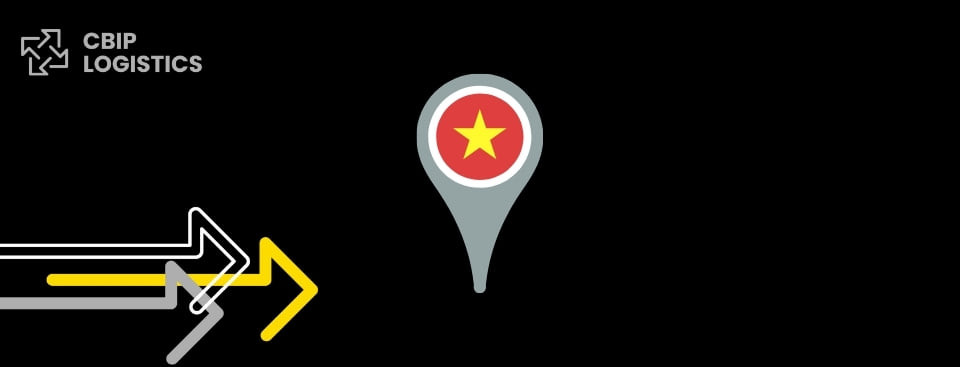Logistics in Vietnam: Growth, opportunities, and need-to-know facts

According to a 2021 McKinsey report, Asia is expected to account for roughly half of the world’s trade growth by 2030.
As the global economy expands, companies around the world are moving their production into new countries with cheaper production costs. And exporting goods to the growing markets within these regions.
Within Asia, Vietnam has become a rising star and ranks among the world’s top 10 emerging logistics markets. It has risen quickly since opening itself back up to global trade in 1986 through an economic policy overhaul known as Đổi Mới, or ‘new innovation.’ Today the nation attracts an increasing number of foreign companies across sectors each year.
The country’s yearly GDP growth in the 2010s came in at 5-7%; in 2020, Vietnam was one of few countries to record an increase during the COVID-19 pandemic.
So what’s causing this boom? From warehousing opportunities to newly-minted global trade deals, let’s take a closer look at the exciting state of the logistics industry in Vietnam.
Read About CBIP’s Global 4PL Logistics Services
VIETNAM’S UNIQUE POSITION
With more than 3,200 km of coastline and major international ports in the north (Haiphong), center (Da Nang), and south (Ho Chi Minh City, Vung Tau) of the country, Vietnam is an ideal hub for shipping.
The logistics sector’s steady growth in Vietnam has led it to become an industry valued at US$ 40 billion today.
Manufacturing also accounts for a significant portion of Vietnam’s overall economic performance today. It has benefitted from both a spike in foreign direct investment and from the country itself becoming more ingrained in global supply chains.
SUPPLY CHAINS MOVING OUTSIDE OF CHINA
Analysts frequently draw comparisons between Vietnam today and China twenty years ago. Besides geographic and demographic similarities, Vietnam has many of the traits that originally enticed manufacturers into China, including:
- Cheap labor costs
- A central location in Asia
- A favorable regulatory environment
It’s no surprise that international firms are getting in on the action. Some prominent examples include:
- Apple, which has has shifted production of iPads and airpods to Vietnam
- Samsung, with a significant production base in Vietnam that accounts for nearly 50% of its smartphones and tablets.
- Footwear giants like Nike and Adidas continuing to move factories to Vietnam, solidifying its place as a textile hub and making it the third largest shoe producer in the world
But there’s more to the story.
Many companies may have previously looked solely at China to diversify their supply chains and set up shop in Asia. However, due to trade restrictions, ongoing trade wars between the US and China, and price increases associated with doing business in China a shift to other Asian nations has begun.
This broad phenomenon is known as the ‘China plus one strategy.’ Following this principle, international firms keep some aspects of their business in China but place other factors like production centers, warehouses, and more in countries outside China. This means Vietnam—in addition to Thailand, India, Malaysia, and others—see new chances to become global centers of manufacturing and shipping.
In terms of the global market share in exports of goods like textiles and furniture, for example, Vietnam’s share of the pie has nearly doubled from 2010 to 2020. For large international firms and growing companies alike, a presence in Vietnam has proven essential.
RELATED: What is 4PL? And Why is it Making Logistics Unrecognizable?
NEW TRADE DEALS AND INFRASTRUCTURE MEAN NEW OPPORTUNITIES
Beyond cheaper manufacturing than China, Vietnam offers other meaningful draws like big trade deals and new infrastructure projects.
In 2020, Vietnam ratified the EU-Vietnam Free Trade Agreement (EVFTA), a historic deal marking the most comprehensive opening of trade between the regions in history.
The agreement, which will see an ongoing rollout over the coming years, removes tariffs on 99% of goods entering Vietnam from Europe. For businesses and consumers, customs duties will also be slashed, lowering prices in both Vietnam and the EU.
Another boost comes from increased development in shipping systems and infrastructure. One such example is the Gemalink Port, which will be Vietnam’s largest deep-sea container port and will be in the top twenty largest ports on Earth. Set to be completed in 2022, the port’s capacity is planned to reach 1.5 million TEUs (twenty-foot equivalent units) per year.
HOW TO EXPAND YOUR OPERATIONS IN VIETNAM
As Vietnam’s total import value continues to increase alongside manufacturing and a burgeoning tech and e-commerce scene, choosing a provider with the right knowledge, connections, and data is crucial.
If you have production centers in Vietnam, are looking to expand your shipping, or want to explore the supply chain opportunities the country has to offer, we’ve got you covered.
As a trusted 4PL provider, CBIP is here to help you navigate your expansion and work as efficiently as possible.
Want to learn more about our Vietnam operations and 4PL solutions we can offer your business? Get in touch today and we’ll be happy to give you a free consultation.






